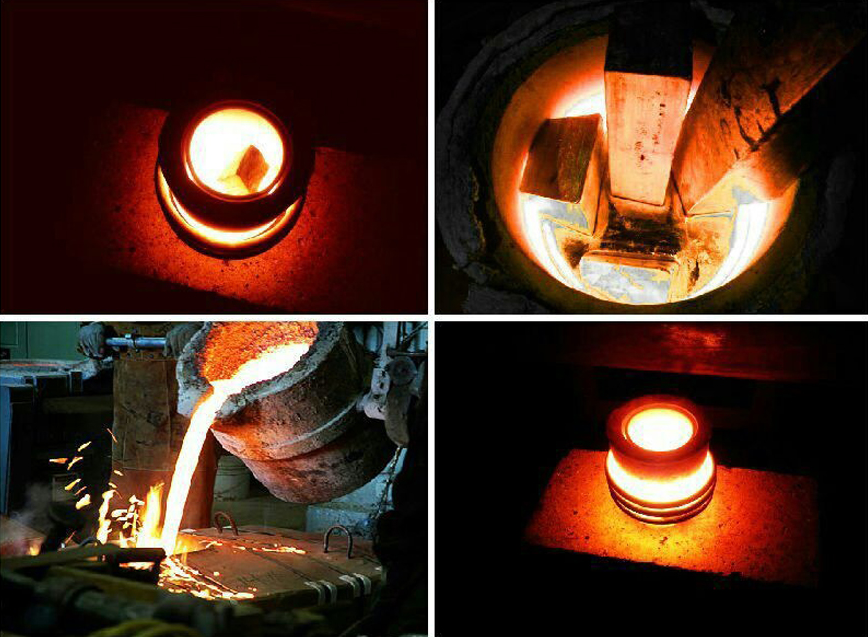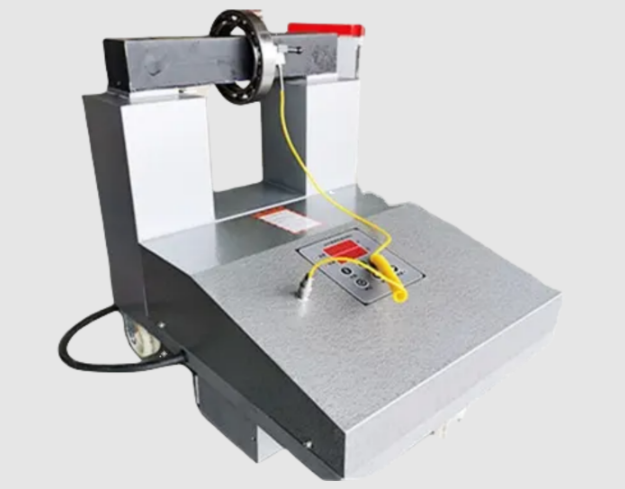An induction furnace for aluminum melting is widely used to melt aluminum and other metals. It operates on the principle of electromagnetic induction to generate heat and melt the metal.
An induction furnace for aluminium melting offers a clean, energy-efficient, and well-controlled melting process compared to traditional methods. Utilizing electromagnetic induction, these furnaces provide rapid and uniform heating, ensuring consistent melt quality. This technology not only reduces energy consumption but also minimizes oxidation losses, leading to higher yield and better-quality aluminum products.
When purchasing an induction furnace for aluminum melting, there are several key factors to consider:

1. Crucible Options
Induction furnaces for aluminum melting typically use crucibles made from graphite or ceramic materials. Graphite crucibles are favored for their excellent thermal conductivity and resistance to thermal shock. Ceramic crucibles, such as those made from silicon carbide, are also commonly used, offering strong resistance to chemical reactions with molten aluminum.
2. Frequency Selection
The frequency of the alternating current supplied to the induction coil plays a key role in the furnace's performance. Lower frequencies, typically below 1 kHz, are ideal for melting larger volumes of aluminum, while higher frequencies, ranging from 1 kHz to several tens of kilohertz, are preferred for smaller melting operations where precise temperature control is crucial.
3. Crucible Handling
Aluminum induction furnaces can be equipped with various mechanisms for tilting or lifting the crucible to aid in pouring. Hydraulic or mechanical systems are commonly used for efficient crucible handling, allowing controlled pouring of the molten aluminum.
4. Capacity
Induction furnaces are available in a wide range of sizes and capacities to meet varying melting needs. Small-scale units can melt a few kilograms of aluminum, while larger industrial furnaces are capable of handling several tons.
5. Alloy Flexibility
Small induction furnaces are highly versatile and can accommodate a variety of aluminum alloys. These include pure aluminum (99% or higher purity) as well as different alloy compositions such as aluminum-silicon, aluminum-copper, and aluminum-zinc alloys.
6. Control Systems
Advanced induction melting furnaces are equipped with sophisticated control systems for precise temperature regulation and monitoring. These systems may include thermocouples or infrared sensors to accurately measure the temperature of the molten aluminum, allowing for adjustments to the power supply to maintain optimal conditions.
7. Safety Measures
Induction furnaces are equipped with essential safety features such as cooling systems, overcurrent protection, and interlocks to ensure safe and reliable operation. These safeguards help prevent overheating and reduce the risk of accidents.
8. Applications
Induction furnaces for aluminum melting are widely used in industries such as automotive, aerospace, foundries, and recycling. They play a crucial role in casting, die casting, and other manufacturing processes that require molten aluminum.
Working Principle of Aluminum Melting Furnace
1. Induction Furnace
One of the most commonly used types of aluminum smelting furnaces is the induction furnace. It operates on the principle of electromagnetic induction to generate heat. The furnace includes a crucible, typically made from refractory material, which holds the aluminum and serves as the container during the melting process.
2. Electromagnetic Induction
The working principle of electromagnetic induction follows Faraday's law. When alternating current (AC) flows through a coil, it creates a magnetic field around the coil. This magnetic field induces eddy currents within the conductive material, in this case, the aluminum. The induced currents generate heat within the aluminum due to its electrical resistance.
3. Melting Process
As the AC current flows through the coil, the resulting magnetic field induces eddy currents in the aluminum. These currents cause heat to be generated as they encounter resistance. The heat generated by the eddy currents melts the aluminum, gradually raising it to the required temperature for casting or processing.
4. Crucible Design
The design of the crucible is key to the efficiency of the induction furnace. The crucible should have high thermal conductivity to promote even heating of the aluminum. It must also be able to withstand high temperatures and resist any chemical reactions with the molten aluminum, ensuring a consistent and safe melting process.
5. Control Systems
Induction furnaces are equipped with advanced control systems to maintain precise control over the melting process. These systems manage parameters such as power input, frequency, and temperature to optimize melting efficiency. Additionally, safety features are integrated to prevent overheating or other potential risks during operation.
Overall
Induction furnaces offer an efficient and reliable method for aluminum melting, providing precise temperature control, energy efficiency, and versatility in handling different alloys. Their extensive use across industrial applications highlights their effectiveness in meeting the demanding requirements of aluminum processing.








